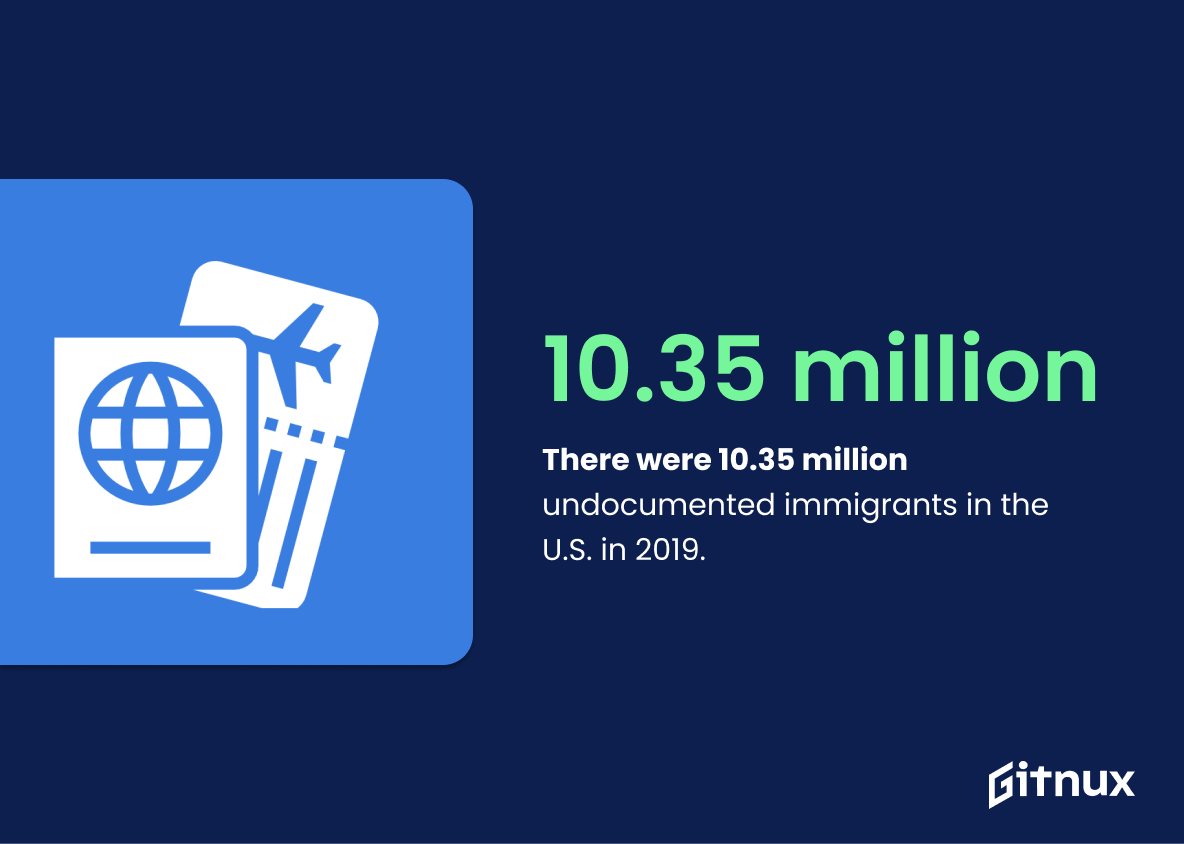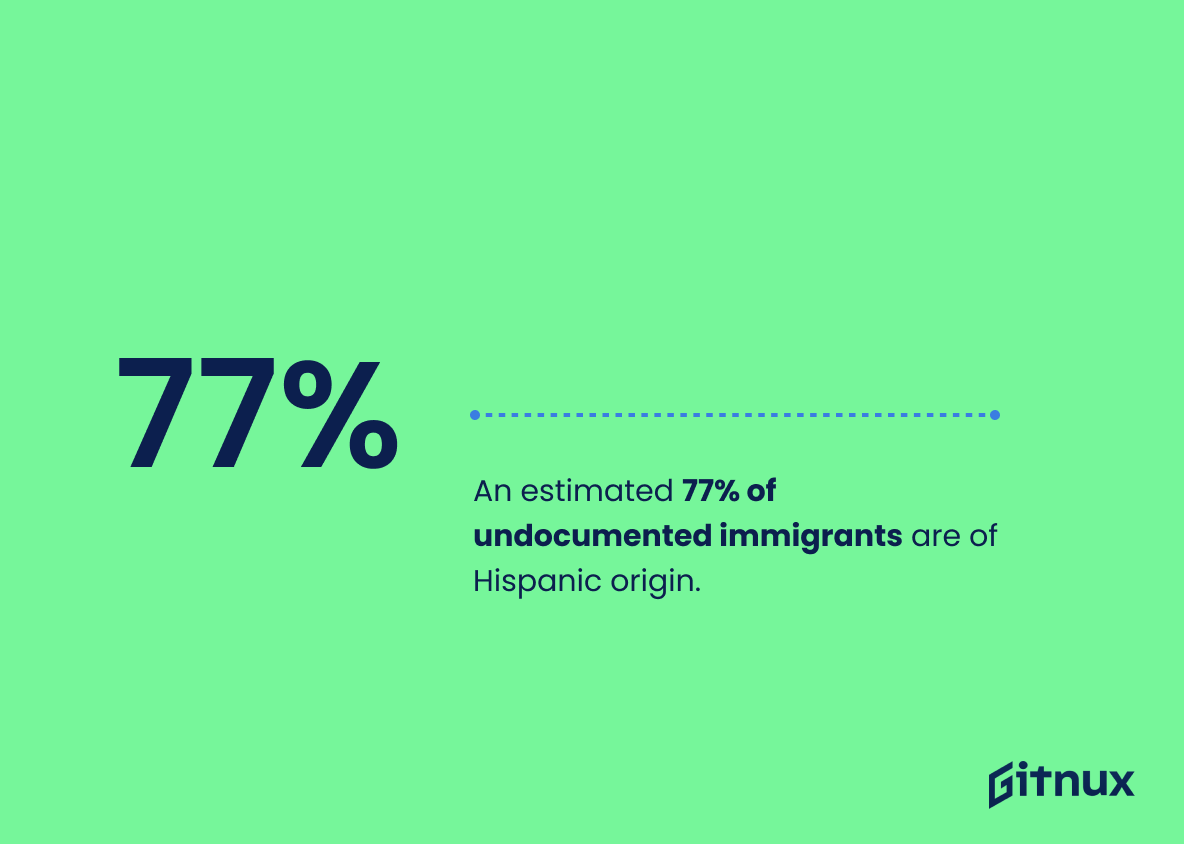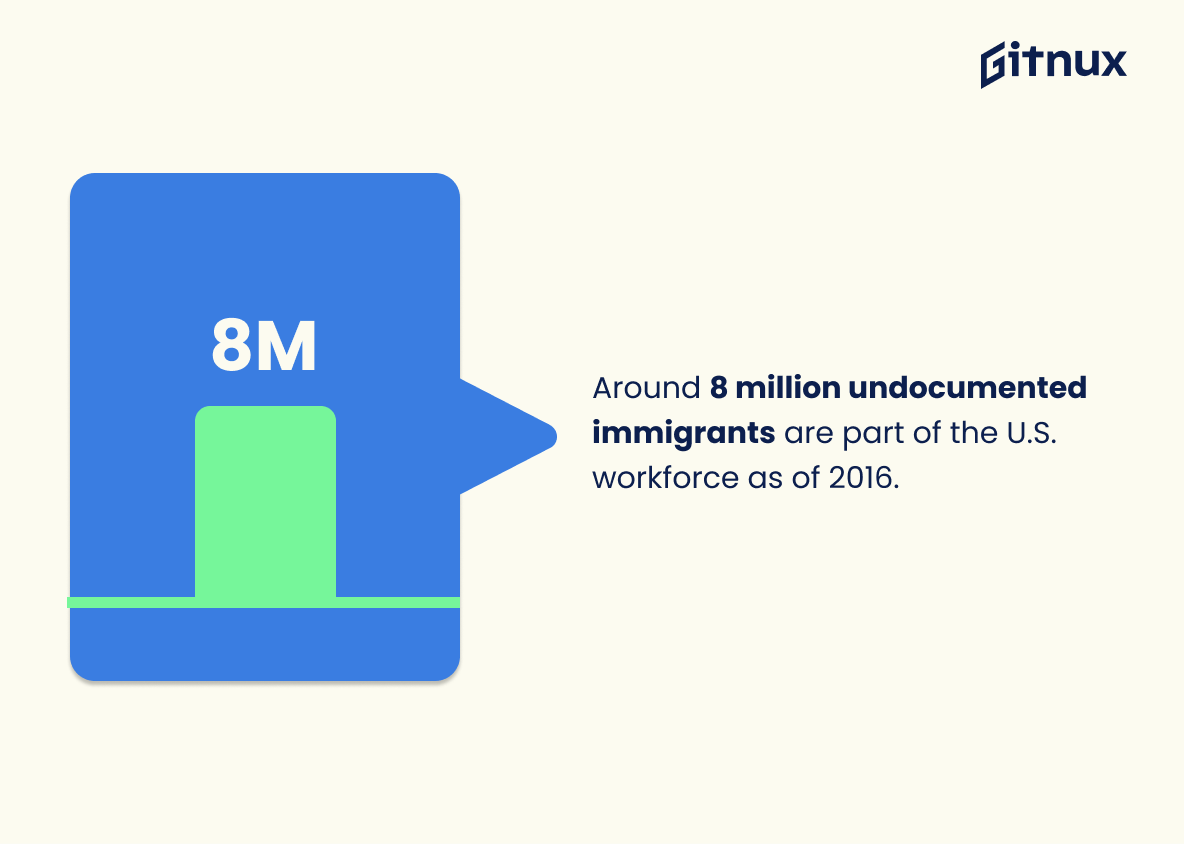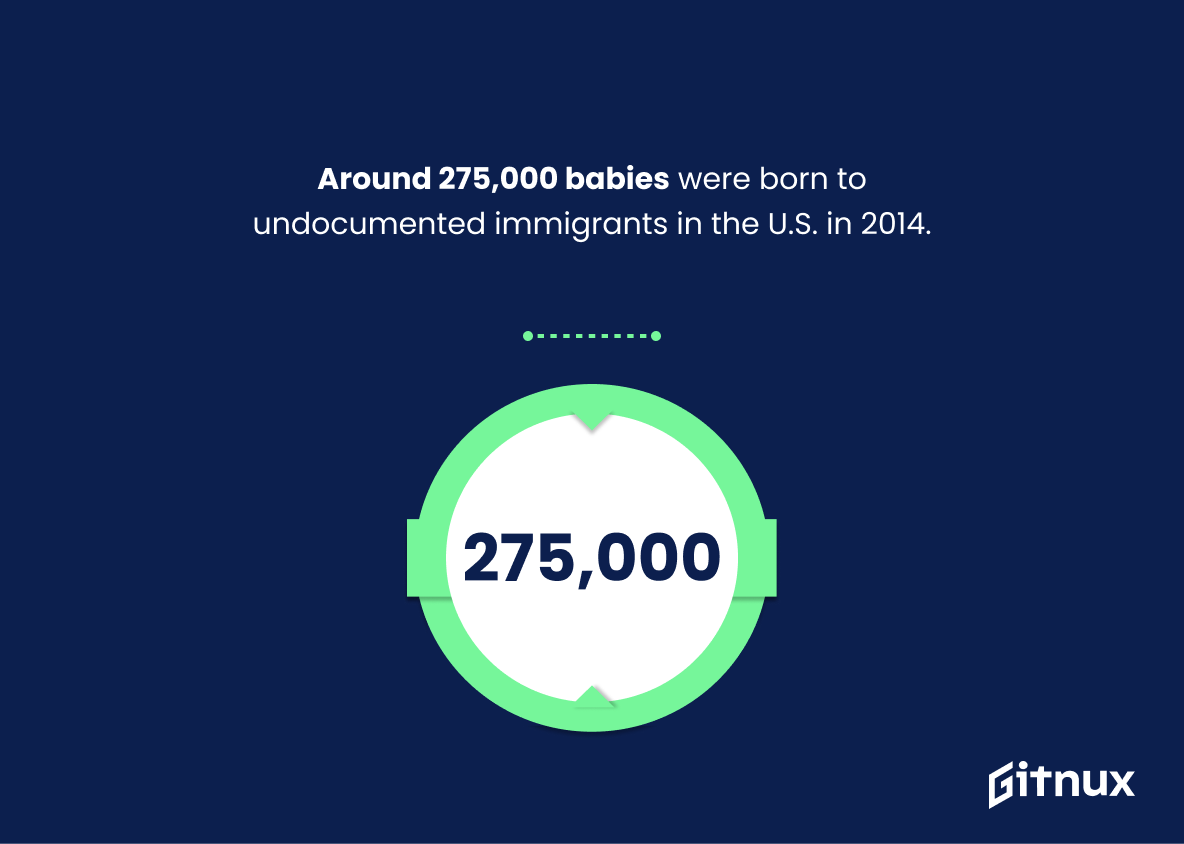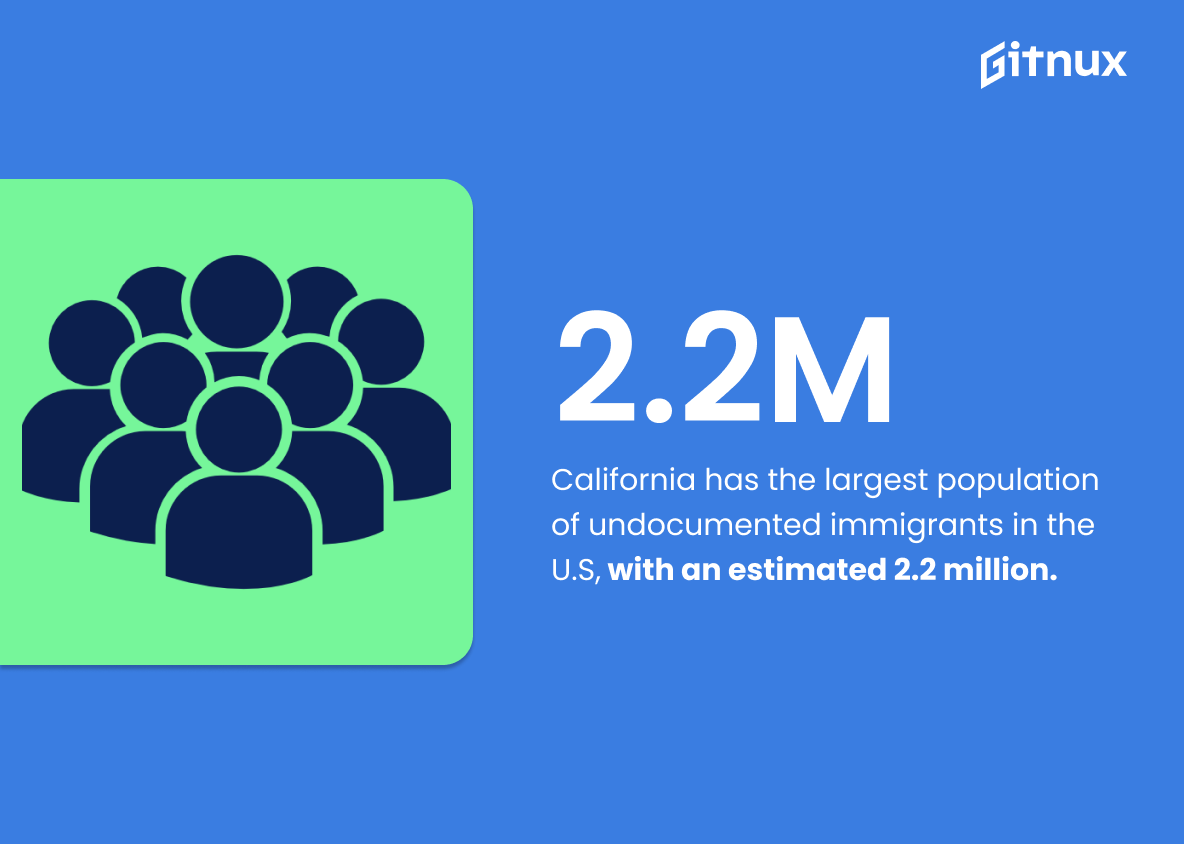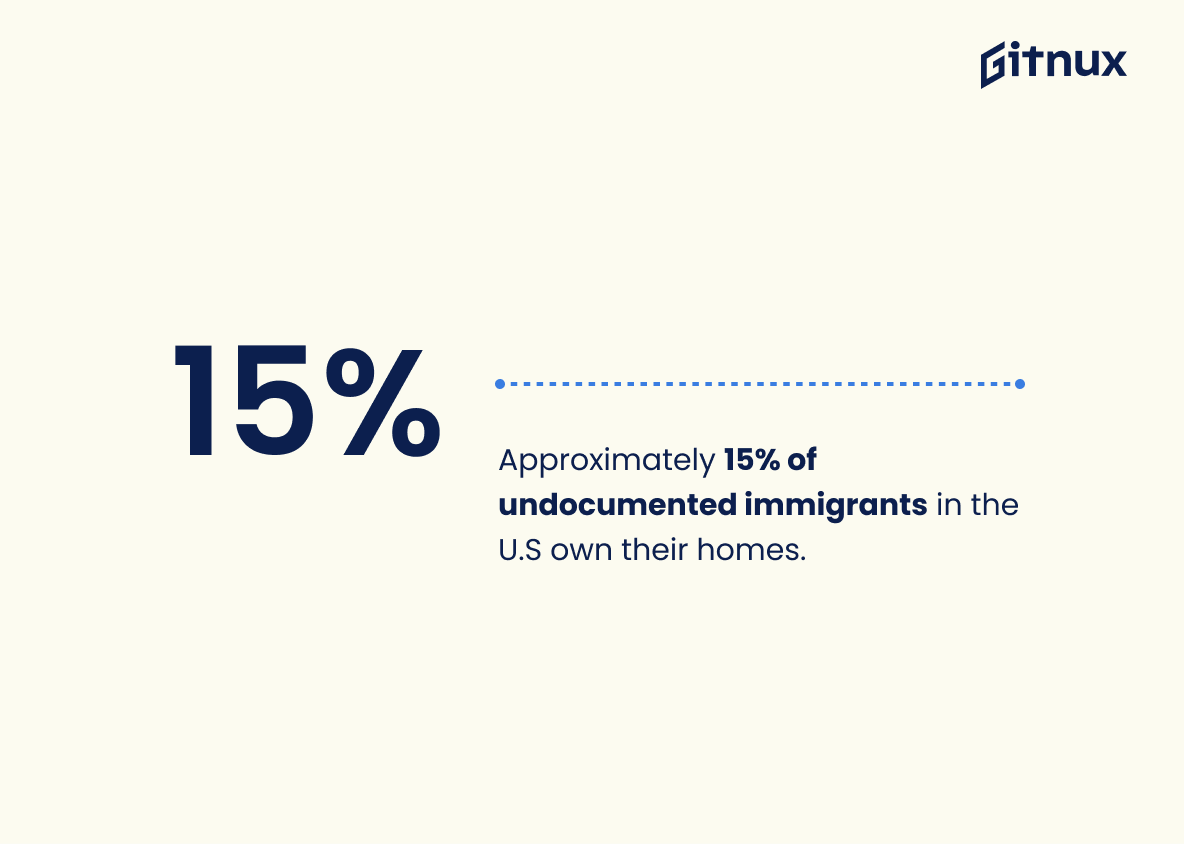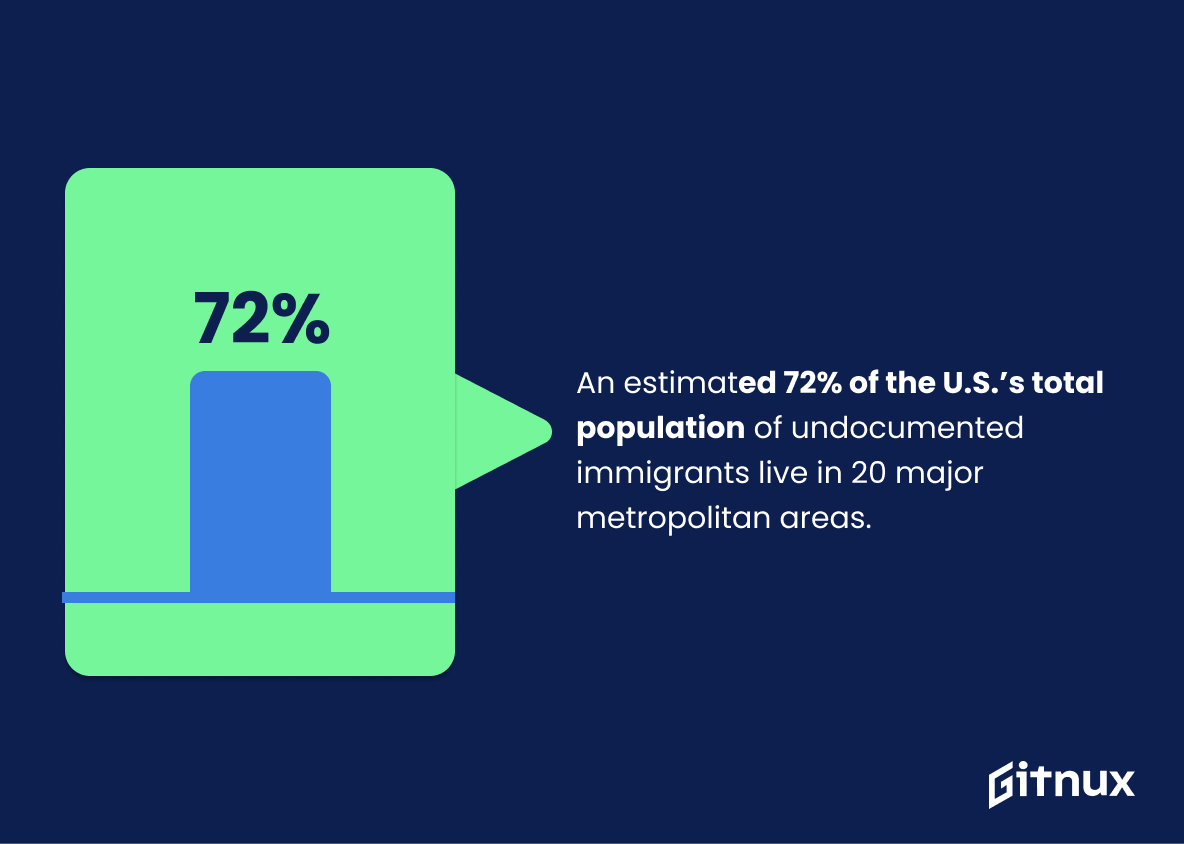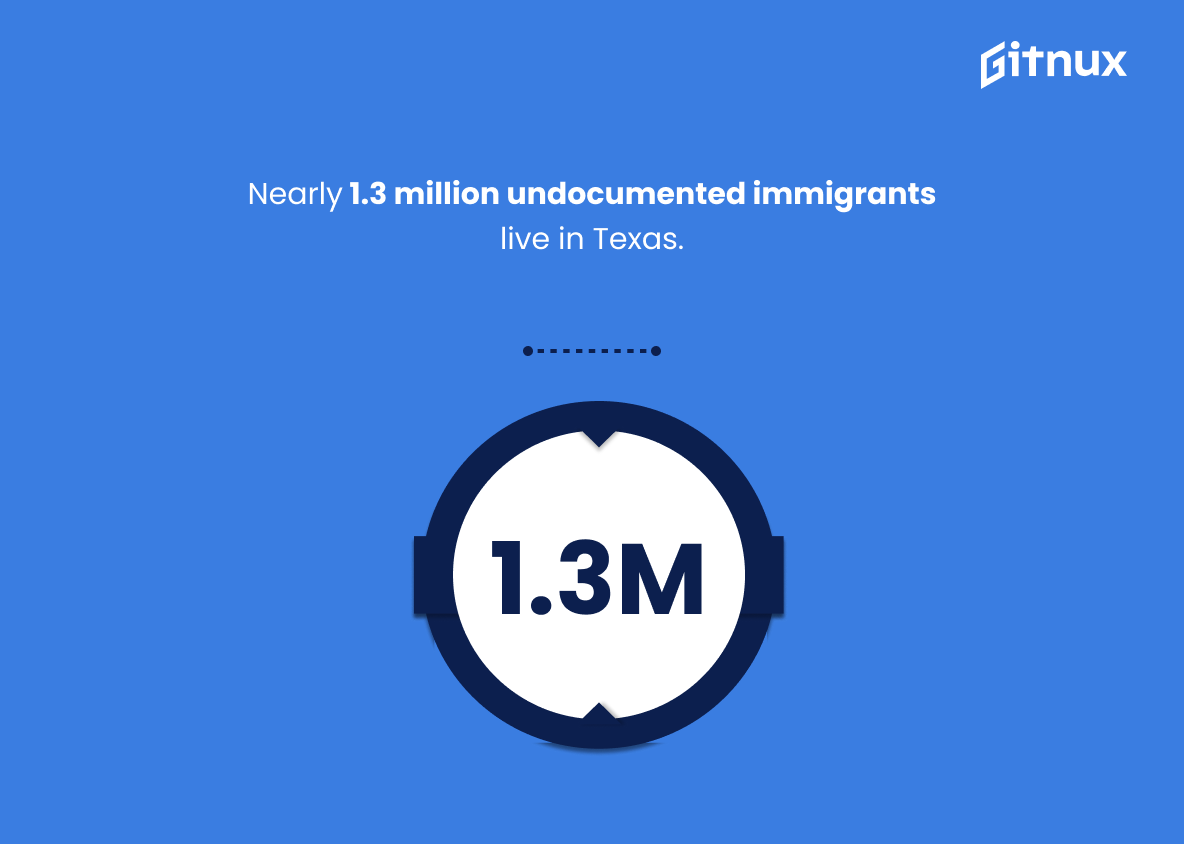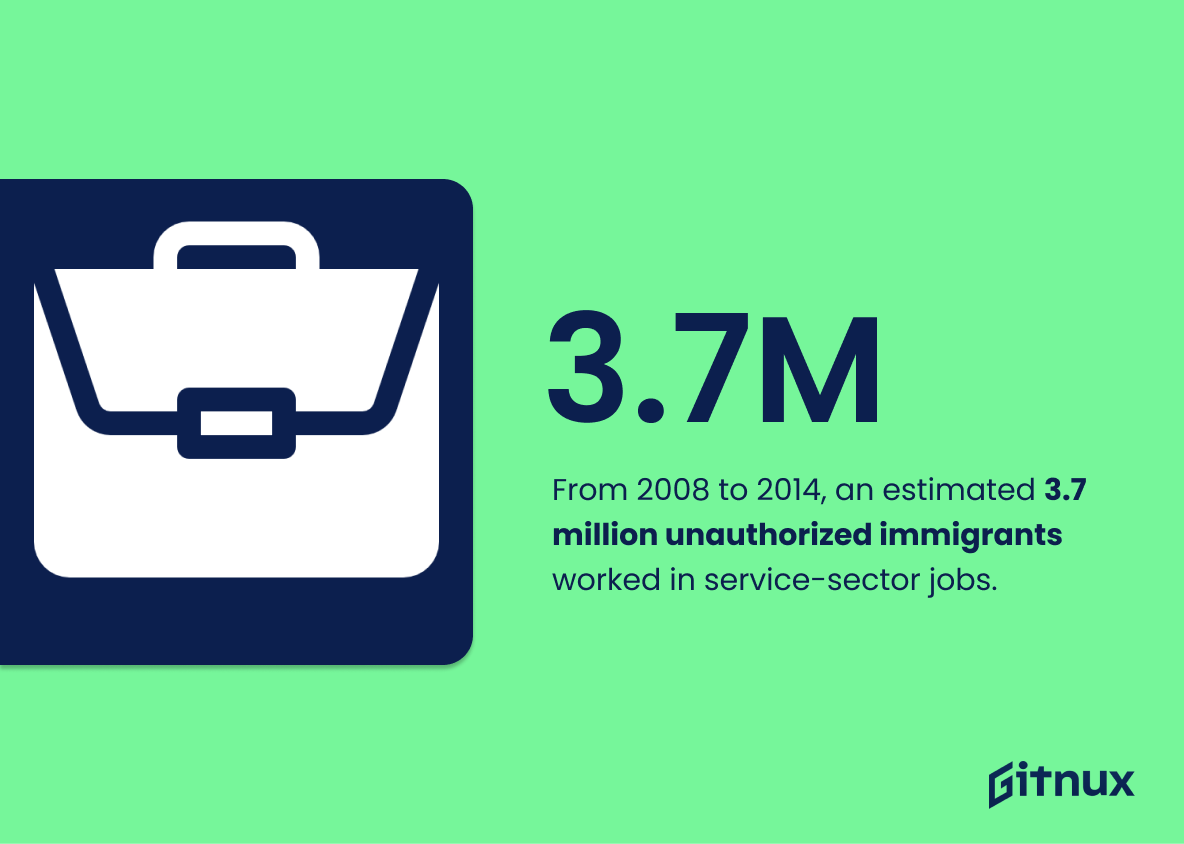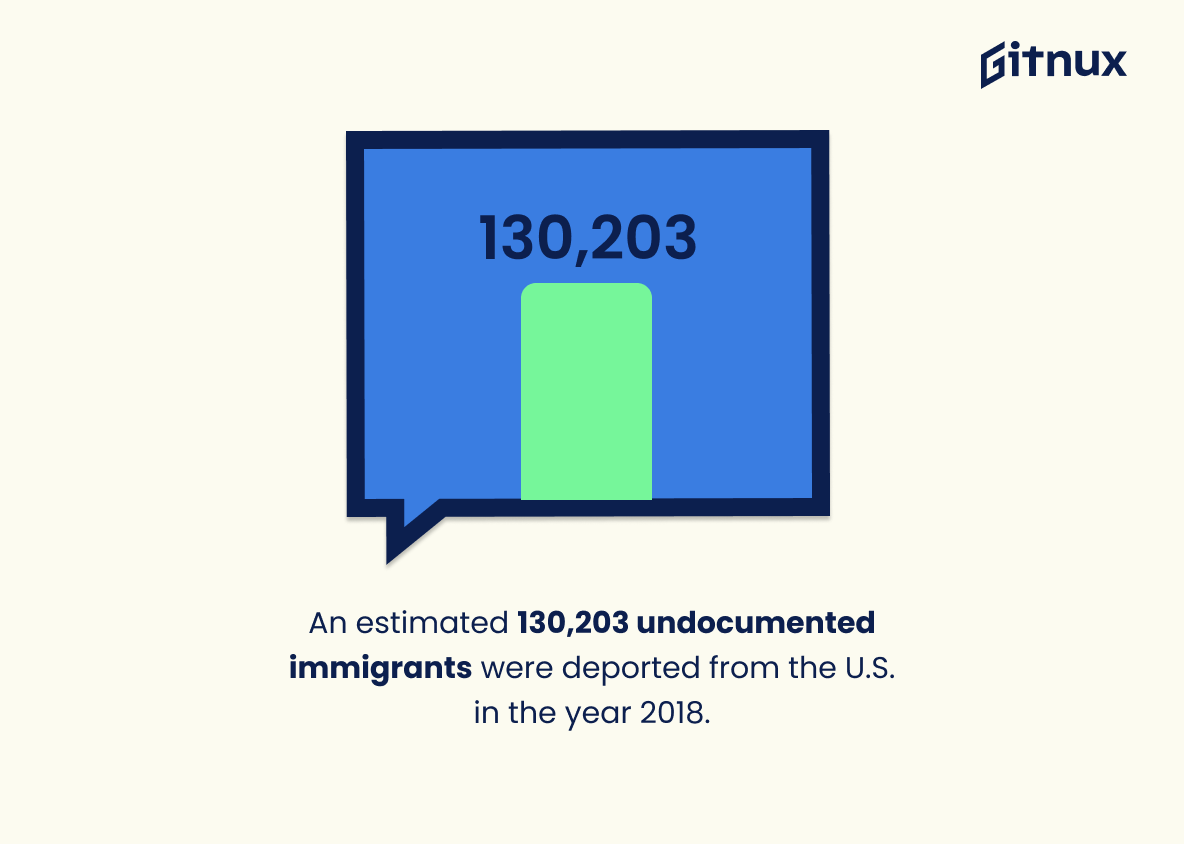Unraveling the complexities of migration requires a deep, informed look into the reality of an oft-misunderstood population – undocumented immigrants. These individuals live, work, and sometimes spend their entire lives navigating a world where they are largely invisible, untethered from census and official registries. In this blog post, we delve into the throbbing heart of this matter — undocumented immigrants statistics. We shall illuminate the shadowy corners of the immigration narrative, dissecting the numbers that exist, examining these statistics in light of socio-economic realities and exploring their impacts on the broader community. By providing concrete data, our aim is to encourage an informed discussion on this critical issue. Buckle up for a fact-fueled journey that will shatter myths and ignite understanding.
The Latest Undocumented Immigrants Statistics Unveiled
There were 10.35 million undocumented immigrants in the U.S. in 2019.
Peeling back the layers of the complex societal tapestry that is the U.S, one revealing strand is the presence of 10.35 million undocumented immigrants in 2019. This figure, as stark as it is illuminating, forms the bedrock of a discussion on Undocumented Immigrants Statistics. It not only highlights the scale at which individuals navigate livelihoods concealed by the laws, but also points to the vast scope of potential socio-economic, political, and humanitarian implications. The ability to grapple with the substantive issues surrounding undocumented immigration hinges on grasping the enormity of this statistic. The blog’s overarching narrative is thus influenced, deepened, and nuanced by this critical foundational fact.
Approximately 2/3 of undocumented immigrants have resided in the U.S. for over 10 years.
Painting a comprehensive picture of the undocumented immigrant narrative, this statistic plays a pivotal role, reframing perspectives and challenging assumptions. It underscores the often overlooked fact that the majority of undocumented immigrants in the U.S. have been contributing members of the society for over a decade. This deep-set involvement illuminates their economic, social, and cultural imprint, bringing more depth to the national discourse on immigration policy reform. Overall, it punctuates the post with a critical takeaway: The undocumented immigrant story is not mere transience, it is a saga of longstanding existence and influence.
An estimated 77% of undocumented immigrants are of Hispanic origin.
When crafting a blog post aimed at illuminating the intricacies of Undocumented Immigrants Statistics, the statistic indicating that approximately 77% of undocumented immigrants hail from Hispanic backgrounds serves a pivotal role. This numeric nugget underscores the extent to which Hispanic communities are entwined in the broader narrative of immigration, fostering illumination and understanding of the unique experiences faced by these individuals. Moreover, it provides a critical lens through which policies, societal attitudes, and support systems can be evaluated, bolstering our understanding of how best to address the complexities and challenges of immigration.
Around 8 million undocumented immigrants are part of the U.S. workforce as of 2016.
In the realm of Undocumented Immigrants Statistics, the revelation that roughly 8 million undocumented immigrants composed part of the U.S workforce as of 2016 offers an intriguing foundation. It grants us a clear vision of the substantial economic role played by these individuals, a factor often overlooked in immigration debates. This substantial figure provides insight into how deeply integrated this demographic is in the everyday function of the country’s economy, making their influence undeniable. It challenges preconceived notions about their role, offering a fresh perspective that illuminates the extent of their contribution to the U.S. workforce.
Around 275,000 babies were born to undocumented immigrants in the U.S. in 2014.
Highlighting the figure of approximately 275,000 babies born to undocumented immigrants in the U.S. in 2014 unveils a critical narrative within the broader discussion on undocumented immigrant statistics. This data point serves as a microcosm, illustrating the deep personal and familial ties these individuals have in the U.S, intertwining them with the social fabric of the nation. In the broader perspective, it underscores the complex implications associated with immigration policies, citizenship questions, and socio-economic impacts. It opens the floor to a dialogue on the futures these American-born children might face due to their parents’ immigration status, the dilemmas inherent in the existing immigration policy, and the potential long-term implications for American society as a whole.
California has the largest population of undocumented immigrants in the U.S, with an estimated 2.2 million.
Highlighting California as the U.S. state with the highest population of undocumented immigrants evokes a striking snapshot of the immigration narrative. It provides a geographical focal point for any discussions or actions related to immigration policy. The figure, an impressive 2.2 million, underscores the vast magnitude of people living without documentation in just one state, setting the tone for a comprehensive understanding of national figures and implications. In a post exploring Undocumented Immigrants Statistics, this information serves as a robust anchor, offering a crucial comparison tool for examining other states or regions, and drawing attention to the high-profile role California plays within the broader tapestry of the immigration debate.
Approximately 7.6% of K-12 students had at least one unauthorized immigrant parent in 2016.
This captivating data point serves as an eye-opener, underscoring the indirect impact of undocumented immigration on the educational landscape in 2016. Unraveling such statistics unearths the complex intertwining of immigration status and education, reminding us that approximately 7.6% of K-12 students are personally navigating the realities of having at least one unauthorized immigrant parent. This substantial proportion illuminates the pressing need to consider their unique challenges when discussing educational policies and support structures. Therefore, it becomes an essential part of our broader storytelling around undocumented immigrant statistics.
Approximately 15% of undocumented immigrants in the U.S own their homes.
Shedding light on the intriguing fact that approximately 15% of undocumented immigrants in the U.S own their homes can provide a new perspective on the socioeconomic status of this demographic. This statistic can significantly reshape the narrative around undocumented immigrants, revealing their contributions to real estate markets and local economies. Furthermore, the startling figure showcases the resilience of this group, highlighting their pursuit of the American dream despite the many adversities they face. No doubt, this compelling number is a surprising testament to their efforts to create a stable environment for their families, thus enriching the contours of our understanding about the undocumented community’s experiences in the U.S.
An estimated 72% of the U.S.’s total population of undocumented immigrants live in 20 major metropolitan areas.
Highlighting the fact that the majority of undocumented immigrants, approximately 72%, reside in twenty primary metropolitan areas is noteworthy in our exploration of immigration trends. This concentration in urban zones underscores how these areas act as powerful magnets drawing in immigrants, with opportunities for jobs, social support, and other resources potentially being the attractions. Additionally, the geographic distribution may influence the allocation of relevant local and federal resources, legislation development, and policy enforcement, making it a key piece of the complex immigration jigsaw puzzle. This data point is not merely a number, but a lens facilitating an understanding of the patterns, challenges, and you could even say, the humanity woven into the tapestry of undocumented immigration in the U.S.
Nearly 1.3 million undocumented immigrants live in Texas.
In the grand tapestry of Undocumented Immigrants’ Statistics, the thread of “nearly 1.3 million undocumented immigrants living in Texas” cannot be overlooked. This significant statistic paints a vivid image of the actual magnitude of adopted Texan residences by undocumented immigrants, serving as a powerful touchstone for the intricacies and narratives that this blog post aims to unfold. Much like how every brush stroke contributes to an overall painting, these Texan residents make up a crucial part of the broader canvas of immigration landscapes in the United States. One must ponder on this quantifiable data to truly delve into and understand the complexities intertwined within the ever-evolving saga of undocumented immigration.
From 2008 to 2014, an estimated 3.7 million unauthorized immigrants worked in service-sector jobs.
Delving into the encompassing significance of the statistic revealing that from 2008 to 2014, an estimated 3.7 million unauthorized immigrants were employed in service-sector jobs; we find a vibrant storyline. This data strand weaves itself into the wider fabric of the undeniably profound impact undocumented immigrants have on the labor market dynamics, charting a candid picture of the scale of their involvement particularly in the service industries.
Simultaneously, this statistic lays bare the striking magnitude and complexity of the issue at hand. It acts as a springboard for further discussion on the myriad of factors such as economic implications, socio-cultural nuances, policy ramifications, and ethical considerations that undergird the discourse around undocumented immigration. It ultimately uncovers the sheer breadth and depth of the discussion surrounding the immigrant workforce and their role in the country’s socio-economic landscape.
An estimated 130,203 undocumented immigrants were deported from the U.S. in the year 2018.
Unraveling the scope of reality that exists behind the numbers, the statistic of 130,203 undocumented immigrants being deported from the U.S. in 2018 sheds light on the magnitude of immigration policy enforcement. This number, stark and resonating, is indicative of the stringent measures taken by the governing bodies and challenges faced by these individuals. It contributes a crucial part to the narrative surrounding undocumented immigration, thus enriching a blog post on the subject with robust and evidential data. It adds significant color to the discourse, offering readers a quantifiable perspective on the issue’s dimensions.
In 2019, an estimated 7% of K-12 students in the U.S. had an unauthorized immigrant parent.
Delving right into the heart of an emergent issue, the statistic declares a potent ripple of impact in the realm of undocumented immigrants, specifically within the precinct of education. Undeniably in 2019, the U.S. education system was directly entangled with the lives of these undocumented immigrants to the tune of 7% of K-12 students having an unauthorized immigrant parent.
Taking into account the sphere of immediate family involvement, this statistic highlights the fact that our schools are not isolated entities, but intertwined with broader societal issues and subject to the ebbs and flows of immigration policies, economy and legislation. Not only does it underline the intersectionality between immigration and education policy, but it also raises pertinent questions about the challenges and dilemmas faced by educators and policymakers alike.
Addressing a narrative broader than mere figures and percentages, this statistic throws light into shadows of many households and classrooms, where a looming cloud of uncertainty prevails. Immigrant status directly influences access to resources, educational achievement and can have profound effects on children’s mental and physical health. Moreover, introducing such data in a blog post about Undocumented Immigrants Statistics emphasizes the multi-generational impact of immigration policy, thus sparking a discussion that is both human and far-reaching in its implications.
Conclusion
Undocumented immigrants remain a profound and complex issue worldwide. The numerous statistical data we discussed clearly underline their economic, social, and cultural impact on the societies that host them. Looking at numbers, we can never ignore that these statistics represent people with stories, hopes, and dreams. While the data helps shape better policies and foster more comprehensive discussions, it’s crucial to acknowledge the human aspect behind these figures. In comprehensive immigration reform, an understanding and human-centered approach should accompany these statistics. Only then can we address both the challenges and opportunities associated with undocumented immigration. Let these statistics not be a wedge to divide us, but a call to unite in finding fair and effective solutions.
References
0. – https://www.www.everything-pr.com
1. – https://www.www.pewresearch.org
2. – https://www.www.ppic.org
3. – https://www.www.brookings.edu
4. – https://www.www.ice.gov
5. – https://www.www.texastribune.org
